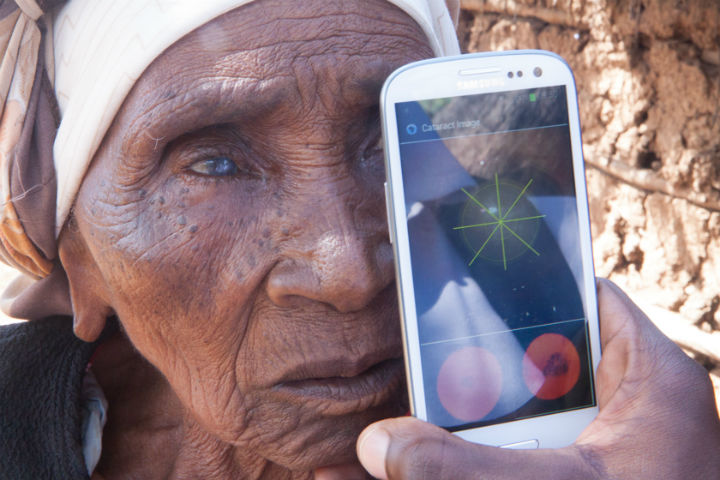With more people in the developing world having access to mobile phones than clean running water, an app conceived in the United Kingdom could be life-changing for millions of people living with undiagnosed eye conditions in rural areas.

Peek — or portable eye examination kit — is currently being used as part of a nationwide survey in Kenya, looking at the eye health of about 5,000 people in rural communities.
Dr. Iain Livingstone, an ophthalmologist and research fellow at the Glasgow Centre for Ophthalmic Research, said he and team of three other founding parnters turned an app to test children’s eyesight into what is now a tool kit that isn’t much more than a modification to a smartphone.
Livingstone explained the app, paired with a 3-D-printed adaptor that fits over the flash and lens of a smartphone camera, can help health care workers diagnose conditions — such as retinal detachment, cataracts, glaucoma or macular degeneration — without equipment that costs hundreds or thousands of dollars and is difficult to transport to far-reaching areas.
“One of the biggest breaks that we made was the ability to replace a traditional piece of equipment called the ophthalmoscope, which is the light at the end of the pen that you’ll have probably had pointed into your eye when you go to your optometrist in Canada.”
Aside from some refinements in the quality of the optics, Livingstone said the ophthalmoscope hasn’t changed much in the past 100 years or so.
“With smartphones, the optics are so sophisticated that they automatically focus to detail. What we’ve developed is an adaptor that reroutes the light such that the smartphone can visualize the human retina.”
He said Peek not only improves what you can diagnose on the spot, but it can allow you to “cascade” images or footage of the retina and optic nerve on the spot, when a closer comparison is needed to diagnose a condition.
He said an ophthalmoscope costs between 400 and 600 British pounds. The materials for the smartphone attachment cost less than one pound to produce, he explained.
In Canada, the price of an ophthalmoscope runs anywhere from $200 to $800 on average.
There are already ophthalmoscopes that incorporate smartphones, but the technology incorporates the mobile device as an attachment. With Peek, the smartphone is the only tool.
Livingstone said the application is relatively easy to use and someone with no formal training in ophthalmology or optometry can learn how to diagnose conditions with as little as five minutes.
He said the health care workers aren’t the ones treating optical conditions. But, because they’ll be able to diagnose them in the field, they’ll be able to refer patients for treatment rather than people having to travel hundreds of kilometres just to get an initial opinion.
What’s more important is that a potentially life-altering condition gets diagnosed in the first place.
“If you can’t see, not only are you disadvantaged but you’re entire family is disadvantaged,” Livingstone said. “Because one person who’s blind means another person has to drop out of work to care for that person. ”
According to the World Health Organization (WHO) there are approximately 285 million people in the world living with visual impairments, while 39 million of those individuals are considered blind.
WHO indicates 90 per cent of the world’s visually impaired people live in developing countries.
Livingstone said there’s still a way to go before Peek can be put into practical use and there are some challenges to overcome.
He said the technology often moves faster than infrastructure and there are concerns that need to be addressed in regards to holding confidential or sensitive information on a phone.
But he said this technological advancement would have broad appeal for use around the world and the Peek team plans to conduct tests in the UK as well.






Comments